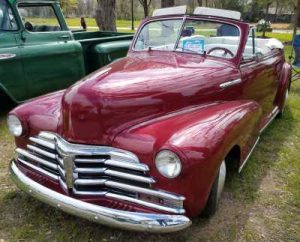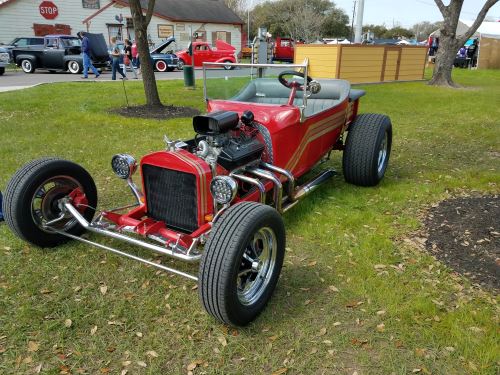Consider Classic Cars as Investments: Yes or No?
At my first thought of “classic cars as investments”, I was intrigued at the idea to grow your money without trying the banks or the stock market. Going to car shows, talking to people who have sold classic cars, and watching the prices increase over the years has opened the eyes of investors for a possible option to grow their money. But not so fast. We need to take a step back and really look at the options and scenarios. Let me be clear as well, you can easily lose money doing this too which we’ll discuss later here. We will look at classic cars as investments only as a profit model, not as an auto enthusiast. But it can be a bit of both for most people.
Buying a Classic Car for Profit
The first step in making the investment in an old car is whether or not you want to restore one or buy it already finished, with several conditions in between. Buying a classic or antique car already restored is going to significantly decrease the profit potential and it may take longer for the value of that car to go up. As they say in the stock market “buy and hold” strategy. While the effort is not there in restoring the car it will take some capital investment to do it this way. This also requires some time and knowledge on the type of car that is desirable for a car enthusiast or investor. Look at the values years before and you can see how much or how little the value has changed. Remember that there are no guarantees as well. Sometimes the classic cars reach a plateau in value and stay that way for years, a flat market per say. A good site to check out some classic cars for sale is Gateway Classic Cars.
Another thing to consider is the amount of money we are talking about, if the cars are high end cars like a Ferrari, Lamborghini, Porsche, some BMW’s or something similar it can be easier to turn a bigger profit because the shear percentage of value increase will affect the price more on a bigger amount. Sometimes you can simply buy the car at one location, maybe an auction, and send it somewhere else where they are more popular, which means a quick profit. I relate that type of investing to a day trader in the stock market. It takes a lot of capital investment to make money this way. The majority of people who want to do classic cars as investments, are not this type of investor.
Restoring Classic Cars for Profit
Now we will get into the more common approach to making money with classic or vintage cars. Or should we say in some cases losing money. This is based on my opinions from my own experiences and those of others who I know in the industry, keep in mind there are always exceptions. The first thing to consider if you are going for the biggest return is what type of car to buy. The era will matter somewhat. Vintage cars from the 1920’s to 1940’s I would consider a bit plateaued with the respect to the American cars. From the 50’s and up, the American muscle cars seem to be gaining ground in the last few years.  The demand for more restoration jobs at the shop is also a good indication. I have also seen many bigger jumps in the foreign car market, specifically in older BMW’s, which are a bit harder to find. But let’s face facts, as time goes by the cars will become rarer and harder to find.
The demand for more restoration jobs at the shop is also a good indication. I have also seen many bigger jumps in the foreign car market, specifically in older BMW’s, which are a bit harder to find. But let’s face facts, as time goes by the cars will become rarer and harder to find.
Buying the car:
Remember when looking for your car to restore there are so many variables to consider. Condition, parts availability, mechanical condition, fair price, is it all original, numbers match, etc. and get an idea of what the car is worth when it is finished. So make sure you do your research before you make the initial purchase.
Common mistakes:
One of the biggest mistakes when buying classic cars as investments would be paying too much based on your perceived value of the car when finished not realizing what it takes to restore it. For example: you find a 65 Mustang running in good shape but needs some tuning up , paint is faded but ok, and maybe a seat is ripped but will pass. So you look around and find a few in restored great shape for 20K. The car for sale is just “ok” for 12K. Your thought is “I have 8K to work with I can bring it to great shape for 4K and I can make 4K”. Not so fast! (all numbers are just hypothetical)
- Get the seat repaired – Maybe $300… Ok, so maybe the repaired area does not match the surrounding old material, looks like you will end up doing the whole interior- $1000- $1500.
- buff the paint and good detail-maybe 2 to $300… Well the paint was thin so you buffed through the paint, you discover a few paint bubbles here and there. If your going for real nice this will have to be addressed. The old paint won’t match the new paint if you only do spot repair. OK, so now your looking at a complete paint job. That can range from 3K to over 10K depending on many factors.
- tune up engine change fluids ,etc -$500 but you discovered the engine over heats and needs a head gasket. Now your looking at a major repair. This is just an example of one thing that could be found.
The next thing you should consider is how much of the repairs you will do yourself or farm out to someone else. The cost will greatly increase when you start using restoration shops to do the work. Classic cars as investments sounded good in the beginning but now you could be second guessing it. You can see where this is going, and it almost never stops until you end up selling the car, often not finished because you may have run out of money, time, or interest. I see many cars sold in pieces for these very reasons.
I can keep going with examples of the issues you will face but keep in mind the estimates you do in the beginning are almost always way below actual cost and time. Classic cars as investments are a great idea if done right, just make sure you know what you are getting into and do your homework first!


